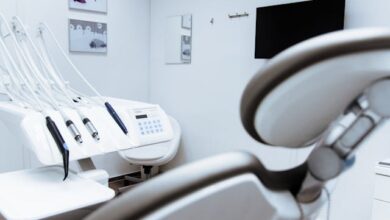Liposuction: Sculpting Your Body, Understanding the Process

Liposuction, a cosmetic surgery procedure, has become increasingly popular for those seeking to refine their body contours. But before diving into the world of sculpted physiques, understanding what liposuction entails, its benefits and drawbacks, and the recovery process is crucial. This article delves deeper into liposuction, equipping you with the knowledge to make an informed decision about this body contouring technique.

What is Liposuction?
Liposuction isn’t a weight-loss solution. It’s a surgical procedure designed to remove localized deposits of fat that resist diet and exercise. These stubborn pockets often accumulate in areas like the abdomen, hips, thighs, buttocks, arms, and neck. Liposuction aims to improve body proportions and create a more sculpted appearance.
How Does Liposuction Work?
The procedure typically involves general anesthesia or local anesthesia with sedation for patient comfort. Here’s a breakdown of the general process:
- Making Incisions: The surgeon makes small incisions (typically a few millimeters) strategically placed in areas where fat removal is desired. These incisions are strategically placed to minimize scarring.
- Cannula Insertion: A thin tube called a cannula is inserted through the incisions. The cannula houses a blunt tip to avoid damaging surrounding tissue.
- Fat Removal Techniques: Depending on the type of liposuction performed, different techniques are used to liquefy and remove fat:
- Traditional Liposuction: A vacuum pump connected to the cannula suctions out the liquefied fat cells.
- Tumescent Liposuction: A large volume of sterile tumescent solution (containing saline, lidocaine, and epinephrine) is injected into the treatment area. This solution numbs the area, reduces bleeding, and shrinks blood vessels, making fat removal easier.
- Ultrasound-Assisted Liposuction (UAL): Low-frequency ultrasound waves are emitted through the cannula to liquefy fat cells before suction, potentially improving results and shortening procedure time.
- Laser-Assisted Liposuction (LAL): Laser energy liquefies fat cells before suction, potentially reducing bleeding and bruising and promoting skin tightening through collagen stimulation.
- Incision Closure: The incisions are typically closed with sutures or steri-strips, leaving minimal scarring.
Different Types of Liposuction:
Each liposuction technique offers distinct advantages:
- Traditional Liposuction: The most common type, suitable for various body areas.
- Tumescent Liposuction: Offers better bleeding control and patient comfort, ideal for larger areas.
- UAL: May improve results and shorten procedure time, potentially beneficial for fibrous fat deposits.
- LAL: May reduce bleeding and bruising, possibly offering some skin tightening benefits.
Candidates for Liposuction:
Liposuction isn’t a magic solution for everyone. Ideal candidates generally meet these criteria:
- Maintain a Healthy Weight: Liposuction isn’t a weight-loss surgery; it’s for body contouring after reaching a relatively stable weight through diet and exercise.
- Good Skin Elasticity: Healthy skin with good elasticity is crucial for optimal results, as it helps the skin conform to the new contours after fat removal.
- Realistic Expectations: Understanding the procedure’s limitations and potential outcomes is essential. Liposuction refines, not drastically changes, body shape.
Pre-Operative Considerations:
Before undergoing liposuction, a thorough consultation with a board-certified plastic surgeon is vital. This consultation typically involves:
- Medical History Review: Discussing any medical conditions and medications to assess suitability for surgery.
- Physical Examination: Evaluating the areas for treatment, skin elasticity, and overall health.
- Photographic Documentation: Taking photographs of the treatment areas helps track progress and set realistic goals.
- Discussion of Risks and Benefits: The surgeon will explain potential complications associated with liposuction and answer any questions you may have.
Recovery After Liposuction:
Following liposuction, expect some swelling, bruising, and discomfort. Here’s what you can expect during recovery:
- Initial Days: Compression garments are worn to minimize swelling and promote healing. Some pain medication may be prescribed to manage discomfort.
- First Week: Swelling and bruising gradually subside. Light activity resumes under the surgeon’s guidance.
- First Few Weeks: Return to most daily activities, with continued improvement in swelling and bruising.
- Full Recovery: Several weeks to months, depending on the extent of the procedure.
Potential Risks and Complications:
As with any surgery, liposuction carries some risks. It’s critical to discuss them with your surgeon beforehand. These include:
- Bleeding and Infection: Standard risks associated with any surgery.
- Swelling and Bruising: These are temporary side effects that gradually subside over time. Wearing compression garments as directed helps minimize swelling.
- Numbness: Temporary loss of sensation in the treated areas is common and usually resolves within a few weeks.
- Irregularities in the Skin’s Surface: Contour irregularities or dimpling may occur, especially if skin elasticity is poor. Choosing a skilled surgeon experienced in liposuction techniques that minimize this risk is crucial.
- Unsatisfactory Results: Asymmetry or unfulfilled expectations can be a possibility. Factors like uneven fat removal or poor skin elasticity can contribute to this. Discussing potential outcomes with your surgeon beforehand and choosing the right technique for your body type are essential to minimize this risk. Revision surgery might be necessary to address unsatisfactory results.
Costs of Liposuction:
The cost of liposuction varies depending on several factors:
- Type of Liposuction: More advanced techniques like UAL or LAL may cost more compared to traditional liposuction.
- Area Treated: The size and number of areas treated significantly influence the price.
- Surgeon’s Experience: Renowned and experienced plastic surgeons typically charge more.
- Geographic Location: Costs may vary across regions and countries.
In the United States, the average cost of liposuction can range from $3,500 to $15,000, depending on the factors mentioned above.
Liposuction and Alternatives:
Before committing to liposuction, it’s crucial to explore other options for achieving your body contouring goals:
- Healthy Diet and Exercise: Maintaining a healthy weight through a balanced diet and regular exercise is the foundation for a healthy body and improved silhouette.
- Non-surgical Techniques: Technologies like CoolSculpting (cryolipolysis) or radiofrequency body contouring might offer less invasive solutions for specific areas. Consulting a board-certified dermatologist or cosmetic physician can help determine if these options are suitable alternatives.
Choosing the Right Surgeon:
The decision to undergo liposuction is a significant one. Choosing a qualified and experienced plastic surgeon is vital for ensuring optimal results and minimizing risks. Here are some tips:
- Look for a surgeon certified by a reputable board in plastic surgery (e.g., American Board of Plastic Surgery in the US).
- Consult with several surgeons to compare their approaches, experience, and patient results.
- Ask specific questions about their experience with the chosen liposuction technique for your desired area.
- Review before-and-after photos of patients who have undergone similar procedures.
Trust your instincts and choose a surgeon who makes you feel comfortable and confident.




